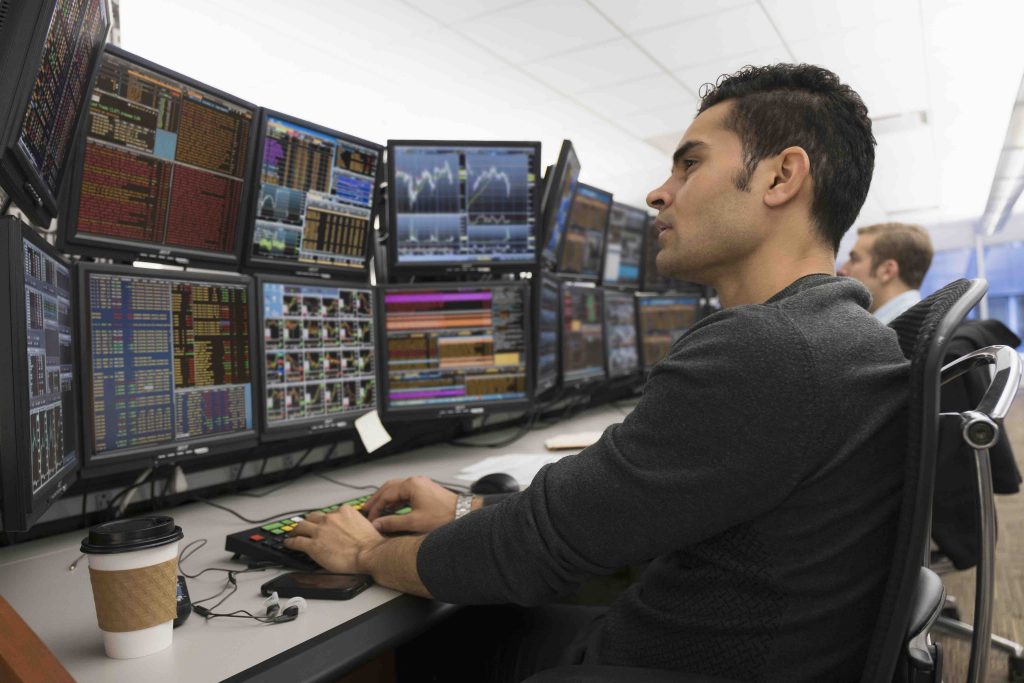The illusion of market timing
Investing is deceptively simple: save regularly, invest for the long term, and don’t be tempted to try to predict market movements. The trouble is, many investors fail to follow this advice, believing they can sell their investments successfully when markets are falling, and buy back into the market when they anticipate a rebound. But this mindset can be a major obstacle to building long-term wealth.
The issue of market timing is more relevant than ever amid the turbulence that has buffeted equity markets worldwide since the onset of the Covid-19 pandemic in early 2000. Following the plunge in share prices as investors took panic at the shutdown of economies across the globe, then an exuberant rebound in the following months, equity prices have since been pulled up and down by the economic impact of the war in Ukraine, rising and falling oil prices, the highest inflation and interest rates in two decades, fears of a recession and hopes of a ‘soft landing’.
With both equity and bond markets in the doldrums during 2022, net flows into European UCITS and alternative funds turned negative for most of the year; net redemptions totalled nearly €350 billion over the first nine months of the year, according to trade body European Fund and Asset Management Association, as investors responded to lower prices by exiting the market. As the outlook brightened in the fourth quarter, they came back with net inflows of €74 billion.
On the face of it, this appears contradictory. Why were investors selling up when prices were lower and more willing to buy when assets were becoming more expensive? From cars to houses, there are few other areas of life where people tend to be more comfortable buying when prices are higher, rather than looking for a bargain. But powerful psychological forces are at work in stock market investment.
Can switching work?
Scientists of behavioural finance have devoted long hours to examining why investors act irrationally, selling up when prices are low, and buying back in when they have risen. In theory, timing the market successfully should lead to outsized gains. An investor savvy enough to invest in March 2009, when markets were at their nadir as a result of the global financial crisis, would have enjoyed handsome returns over the next few years.
John Authers of the Financial Times wrote in 2017: “The argument in favour is that successful market timing can make you rich beyond the dreams of avarice. The long-term returns of the stock market are concentrated in a few days.” He noted that according to Javier Estrada of the IESE Business School, over a period of 40 years, missing only the market’s best 10 days would have cost investors about half their capital gains, while avoiding the 10 worst days would have multiplied aggregate gains two-and-a-half times.
The problem is that this conclusion is the result of 20:20 hindsight. The overwhelming majority of investors conduct few switches at the right time, and are likely to do so at the worst time, buying at market peaks and selling at the nadir. They are prone to panic, convinced that any correction means markets are embarked on a long-term downward trend.
Poor powers of prediction
Veteran US economist and Nobel Prize-winner Paul Samuelson observed in 1982: “Markets have predicted nine of the last five recessions.” By 2019, it was up to 13 of the last nine downturns, according to LaSalle’s now-retired global head of research and strategy Jacques Gordon. Selling at the first sign of trouble means an investor may miss out on any recovery in share prices or ongoing dividend income. This is a particular problem because markets have a habit of rising rapidly after sudden sell-offs, as happened in 2020.
According to US asset manager Putnam Investments, someone investing $10,000 in the S&P500 index at the end of 2002 and staying fully invested for the next 15 years would have seen it grow to $41,333 – almost double the $20,873 of an investor who missed the market’s best 10 days over that period.
In many cases, Putnam says, the best days immediately followed a sell-off, such as the three-day rally that followed the dramatic slump in response to the UK’s vote in 2016 to leave the European Union, or after the temporary market panic when Standard & Poor’s downgraded the US sovereign debt rating in 2011.
The key problem, behavioural scientists say, is that investors are impelled to run with the herd (…) when acting in the opposite way to the crowd can deliver a significant advantage.

Herd behaviour and over-confidence
The key problem, behavioural scientists say, is that investors are impelled to run with the herd. In the days when humans were hunting in the African savannah, acting in a pack made sense, boosting protection from predators. But this hard-wired instinct is not as useful when it comes to investment, when acting in the opposite way to the crowd can deliver a significant advantage.
Not only are humans prone to over-reaction to either good or bad news, they also tend to overestimate their ability to predict market movements. This is seen in other areas of life – 82% of young US drivers consider themselves in the top 30% of their peer group in terms of safety; likewise, entrepreneurs vastly over-rate the chances of their business succeeding.
Behavioural finance suggests that this tendency to over-react becomes even more acute at pressure points, when the stakes are greater, such as near retirement, making important decisions for children, or when the economy is floundering and people are worried about losing their jobs.
Consequences of poor judgement
These behavioural traits have real-world financial consequences. The annual Dalbar Quantitative Analysis of Investor Behavior has repeatedly demonstrated that investors are wont to make poor choices and lose money as a result. This means they do not receive the published return of the funds in which they invest, but several percentage points less, because of their habit of buying and selling at the wrong time.
The US market research firm says the 20-year annualised return from S&P500 stocks is more than 8%, but the average investor receives around 4.7%. When this gap is compounded over many years, it can make a huge difference to long-term wealth. An investment of €50,000 growing at 8% over 20 years would reach €233,048; at 4.7%, it would be just €125,286.
Another problem is that switching in and out of investments incurs costs that also erode returns, even before considering the opportunity cost of being out of the market.
Another problem is that switching in and out of investments incurs costs such as brokerage and other transaction fees that also erode returns, even before considering the opportunity cost of being out of the market. Few investors consider fees when making their choices, but 0.5% here and there can mount up over time, particularly if the switch in investment produces no appreciable benefit.
Staying invested
The structure of the investment industry does relatively little to encourage people to stay exposed to the market. If anything, some sectors appear geared to making market timing as rapid and efficient, if not necessarily as profitable, as possible. For example, exchange-traded funds can be traded from minute to minute, like stocks, making it easier to indulge in over-frequent switching.
Some fund management groups have introduced fee structures that offer incentives to remain invested during difficult times, such as lowering their annual fee at times of market stress or if the fund has performed poorly relative to a benchmark. While often complicated, these measures may represent a welcome variation from the standard fee model that encourages investors not to move in and out of the market without due thought.
All the evidence points to the conclusion that the most successful way to build wealth is to save regularly, position a portfolio correctly for the individual’s long-term goals, and leave it alone. Timing the market is a fool’s errand.


 Mortgage
Mortgage Personal loan
Personal loan Savings
Savings